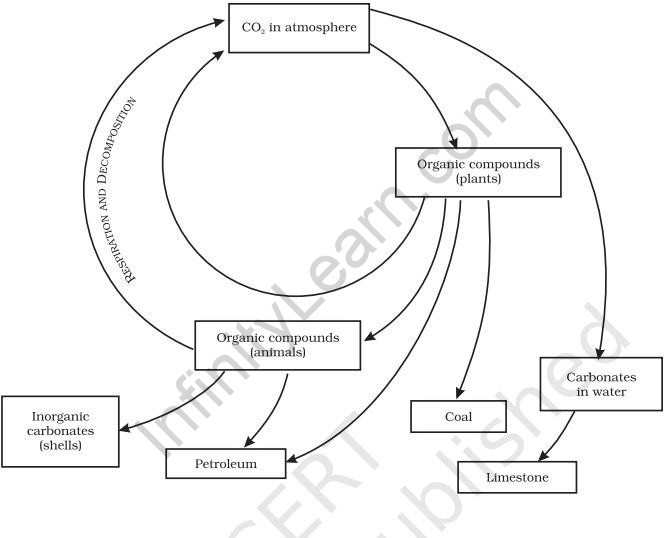Table of Contents
Table of Contents
- Importance of Carbon
- Carbon Cycle
- Greenhouse effect
- Summary
- Did You Know?
- What’s Next?
In the previous segment of the chapter ‘Natural Resources,’ we learned about the second biogeochemical cycle, nitrogen cycle. In this segment let us get ourselves introduced to the third biogeochemical cycle, Carbon cycle.
Why is Carbon important?
- Carbon dioxide is an important ingredient for photosynthesis, which helps plants prepare their own food.
- The carbohydrates, fats, proteins also contain carbon in some form or the other.
- Endoskeletons and exoskeletons of organisms like marine animal shells are also made up of carbonate salts.
What is the Carbon cycle?
The carbon cycle is the biogeochemical cycle by which carbon is exchanged among the various spheres of earth.
The carbon cycle can be understood easily as two interconnected subcycles:
- Biological carbon cycle
- Geological carbon cycle
Let us begin with the first one.
- Biological carbon cycle: Autotrophs capture carbon dioxide from the air or bicarbonate ions from the water and use them to make organic compounds such as sugar. Heterotrophs like herbivores and humans consume these autotrophs and this organic carbon that is sugar is passed through food chains and webs. To release the energy stored in carbon-containing molecules, such as sugars, autotrophs and heterotrophs break these molecules in a process called cellular
respiration. In this process, the carbons of the molecules are released as carbon dioxide. Decomposers also release carbon dioxide when they break down dead organisms.
- Geological carbon cycle: On land, carbon is stored in the soil as organic carbon from the decomposition of living organisms or as inorganic carbon from weathering of terrestrial rock and minerals. Deep under the ground, we find fossil fuels which are the remains of plants and animals that are decomposed under anaerobic conditions. These fuels are very very precious and non- renewable as it takes millions of years to form. When humans burn these fuels, carbon is released back into the atmosphere in the form of carbon dioxide. Thus completing the cycle.
There is yet another way, where carbon can enter back into the atmosphere that is during volcanic eruptions.
The geological pathway of the carbon cycle takes much longer than the biological pathway. It can in fact take around millions of years for the geological pathway of the carbon cycle to complete its one round.
Carbon cycle

What is the Greenhouse effect?





